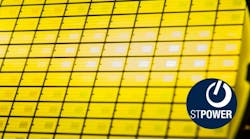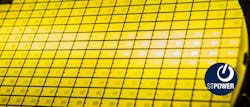ST Readies New SiC Power Tech for EV Traction Inverters
While the electric-vehicle market continues to grow, challenges remain to achieve widespread adoption. One trend to address those issues is the development of 800-V EV bus drive systems based on silicon carbide (SiC). These systems enable faster charging and reduced EV weight, making it possible for automakers to produce vehicles with longer driving ranges for premium models.
On that front, STMicroelectronics is introducing its fourth-generation STPOWER SiC MOSFET technology. The Generation 4 technology enhances power efficiency and power density in products for both the automotive and industrial markets. With volume ramp-up scheduled throughout 2025 across 750- and 1,200-V classes, ST aims to bring the advantages of SiC beyond premium automotive models to mid-size and compact EVs.
EVs rely on traction inverters to convert the high-voltage DC energy stored in the vehicle’s batteries to drive AC traction motors. The traction inverter must be extremely robust and reliable, given the high power switching and the likely high dv/dt transients involved.
ST’s new 750- and 1,200-V SiC MOSFET devices promise to improve the energy efficiency and performance of both 400- and 800-V EV bus traction inverters. The SiC technology is also said to be suitable for a variety of high-power industrial applications, including solar inverters, energy storage solutions, and data centers, improving energy efficiency for these growing applications.
Much Lower On-Resistance
According to ST, the Generation 4 SiC MOSFETs feature a significantly lower on-resistance (RDS(on)) measured against prior generations, minimizing conduction losses and enhancing overall system efficiency. They offer faster switching speeds, which translate to lower switching losses, vital for high-frequency applications and enabling more compact and efficient power converters.
The Generation 4 technology provides additional robustness in dynamic reverse bias (DRB) conditions (a reliability test that can help detect issues in wide-bandgap, WBG, devices), exceeding the AQG324 automotive standard, thus ensuring reliable operation under harsh conditions.
The Gen-4 MOSFETs are said to provide higher efficiency in smaller components that feature reduced weight, and extended driving range compared to silicon-based solutions. The company plans to introduce further SiC technology innovations through 2027
ST has already supplied STPOWER SiC devices for more than five million passenger cars worldwide in a range of EV applications, including traction-inverter, onboard charger (OBC), DC-DC converter, EV charging station, and e-compressor applications.
SiCs for McLaren
British engineering and technology company McLaren Applied selected STMicroelectronics as a supplier of SiC power modules for its next-generation IPG5 800-V inverter. In choosing ST’s SiC, McLaren Applied aims to secure a solid and regular power electronics supply chain as it ramps up production and commercialization of its IPG5 inverter for OEMs and Tier 1 partners.
In the last six months, McLaren Applied has finalized powertrain agreements with U.S. hybrid sports car marque Czinger and in-wheel motor specialist Elaphe for the supply of its IPG5 inverter. A host of other mid- and high-volume EV models are expected to be announced in the near future.
At just 3.79L in size and weighing 5.5kg, IPG5 is said to extend an EV’s range by over 7%. McLaren Applied’s IPG5 is highly controllable, offering variable switching frequencies and superior motor response. The variability in switching frequency up to 32 kHz enables engineers to use a faster, more efficient, and lightweight drivetrain. McLaren Applied’s IPG5 leverages the ST ACEPACK DRIVE power module based on third-generation, 1,200-V SiC MOSFET technology.
4th-Gen SiC Availability and Roadmap
ST completed qualification of the 750-V class of the fourth-generation SiC technology platform; qualification of the 1,200-V class is expected in the first quarter of 2025. Commercial availability of devices with nominal voltage ratings of 750 and 1,200 V will follow, enabling designers to address applications operating from standard AC-line voltages up to high-voltage EV batteries and chargers.
To accelerate the development of SiC power devices through its vertically integrated manufacturing strategy, ST is developing multiple SiC technologies innovations in parallel. The fifth generation of the company’s SiC power devices will feature high-power-density technology based on planar structure.
At the same time, ST is developing an innovation that promises even better RDS(on) values at high temperatures and further RDS(on) reduction compared to existing SiC technologies.
Die Area Figure of Merit
The average die size of Generation 4 devices is 12% to 15% smaller than that of Generation 3, considering an RDS(on) at 25°C, allowing for more compact power-converter designs, saving valuable space, and reducing system costs.
The improved power density of these devices supports the development of more compact and efficient power converters and inverters, essential for both automotive and industrial applications. In addition, this is particularly beneficial for power-supply units in server data centers for AI, where space and efficiency are critical factors.


